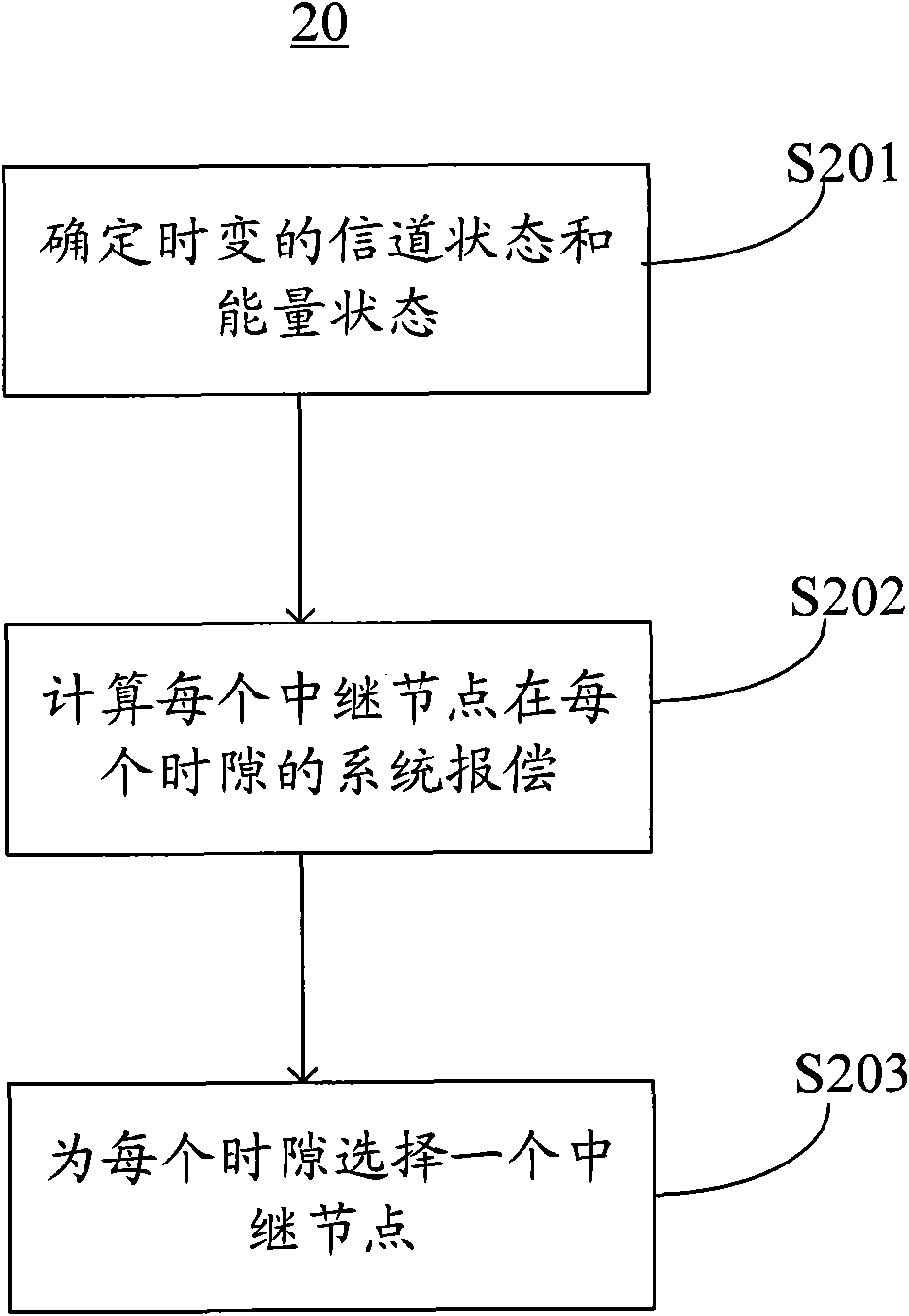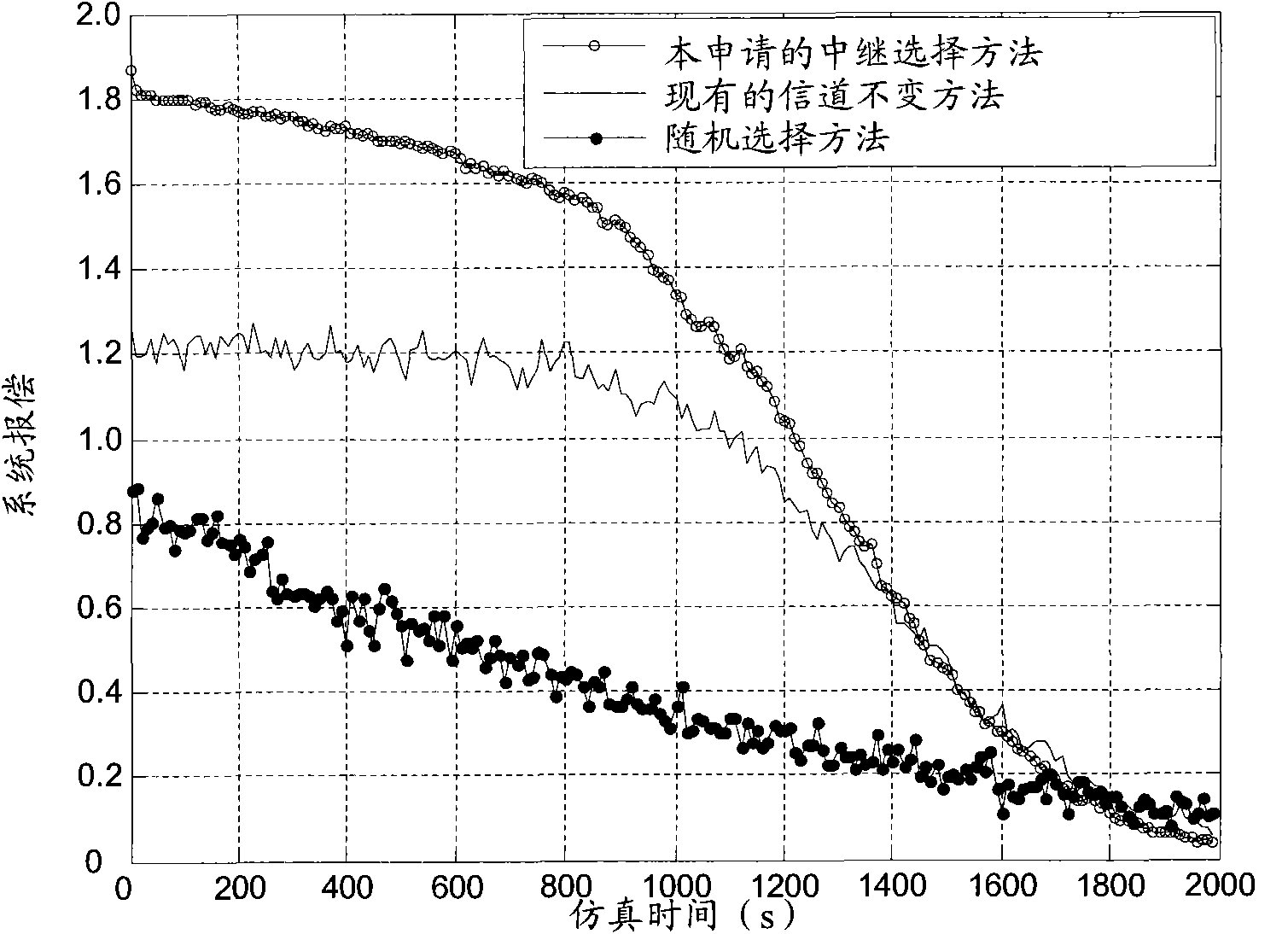Energy efficient distributed relay selection algorithm in wireless cooperative relay network
A cooperative relay and network technology, applied in the field of wireless communication, can solve the problems of not considering effective energy saving consumption, not applicable to actual networks, and relay nodes not using adaptive modulation and coding, so as to avoid the effect of noise amplification
- Summary
- Abstract
- Description
- Claims
- Application Information
AI Technical Summary
Problems solved by technology
Method used
Image
Examples
Embodiment Construction
[0014] In order to clearly illustrate the solutions of the present application, the exemplary embodiments of the present application will be described in detail below with reference to the accompanying drawings.
[0015] First, refer to figure 1 Introduce distributed cooperative relay networks.
[0016] In this application, consider a peer-to-peer distributed cooperative relay network, each node in the network has the ability to forward (relay) data packets for other nodes, and its network model is as follows figure 1 shown. In cooperative relay communication, the transmission process of each frame of data can be divided into two sub-slots: in the first sub-slot, the source node sends a data frame to the destination node, and the destination node and the relay node receive data at the same time; the second sub-slot sub-slots, the relay node forwards the data frame, and the destination node combines the data frame from the source node in the first sub-slot and the same data f...
PUM
 Login to View More
Login to View More Abstract
Description
Claims
Application Information
 Login to View More
Login to View More - R&D
- Intellectual Property
- Life Sciences
- Materials
- Tech Scout
- Unparalleled Data Quality
- Higher Quality Content
- 60% Fewer Hallucinations
Browse by: Latest US Patents, China's latest patents, Technical Efficacy Thesaurus, Application Domain, Technology Topic, Popular Technical Reports.
© 2025 PatSnap. All rights reserved.Legal|Privacy policy|Modern Slavery Act Transparency Statement|Sitemap|About US| Contact US: help@patsnap.com



